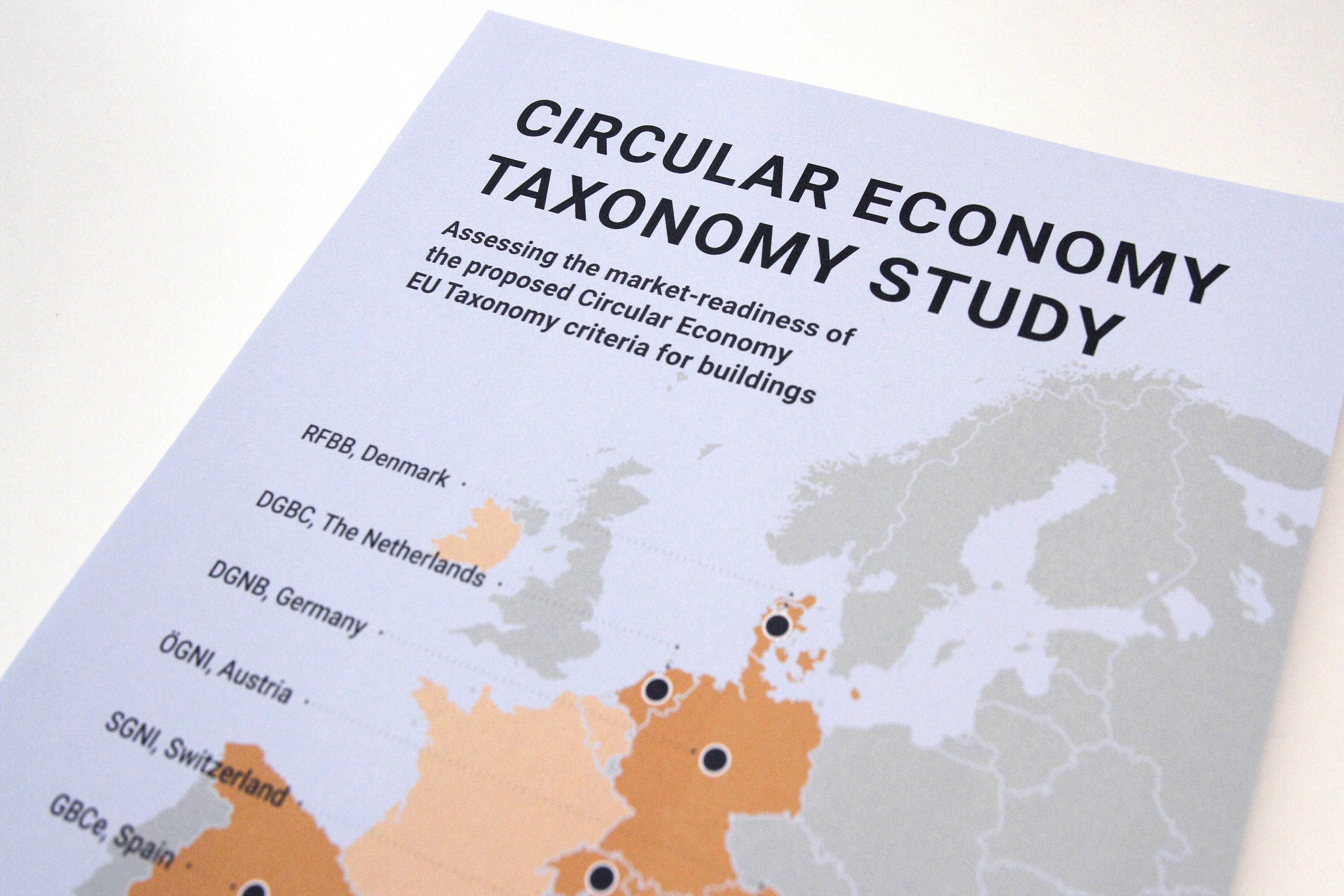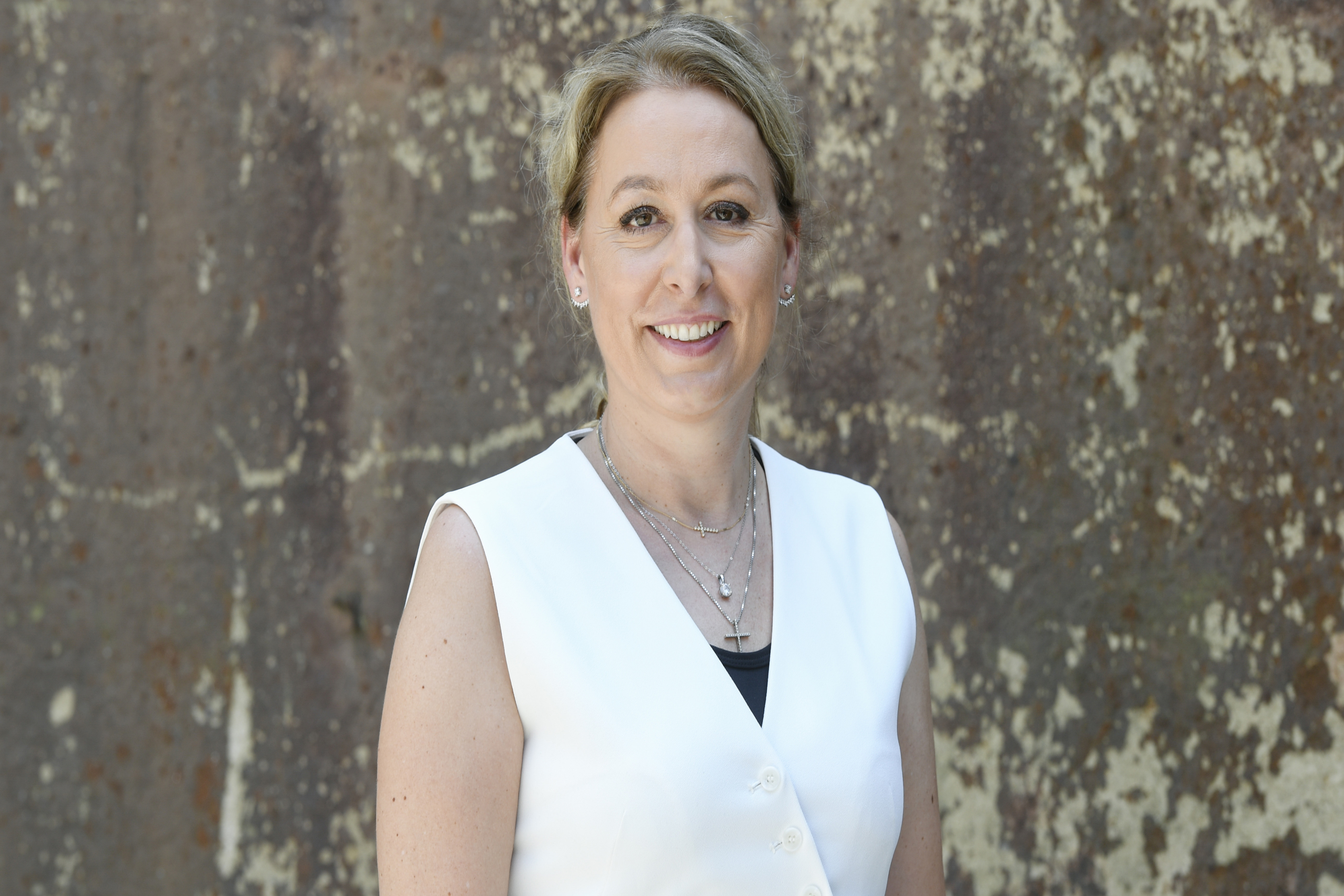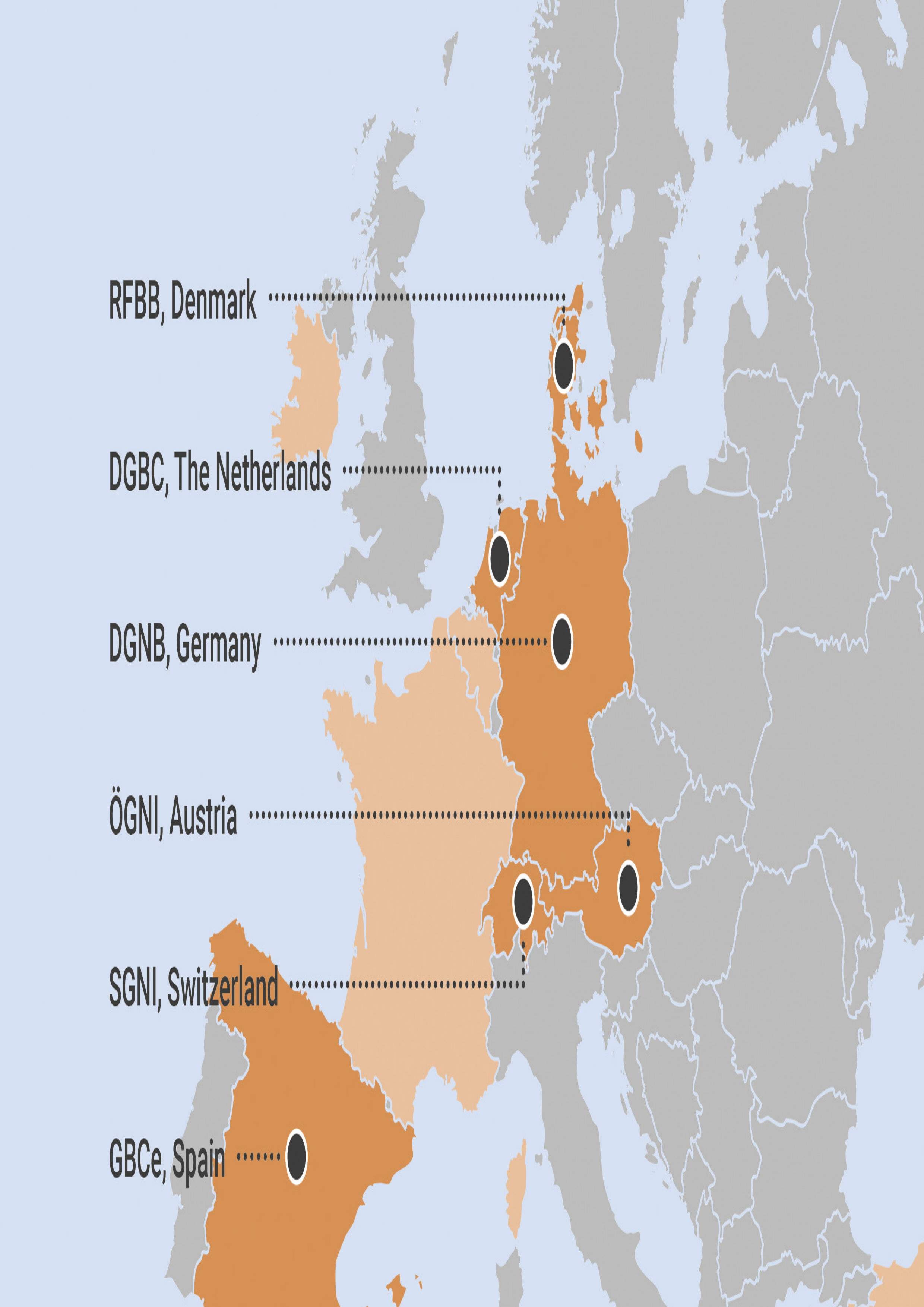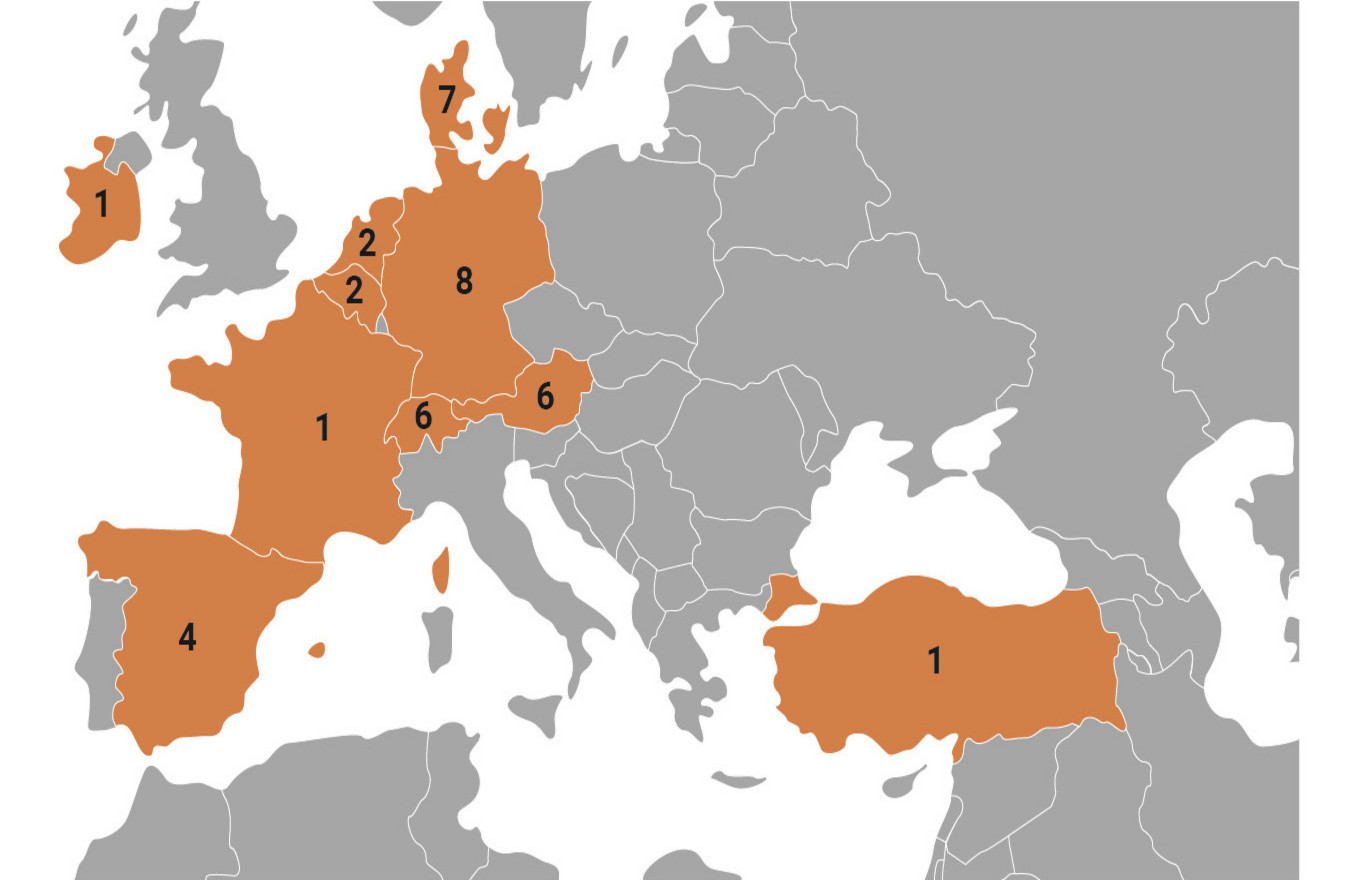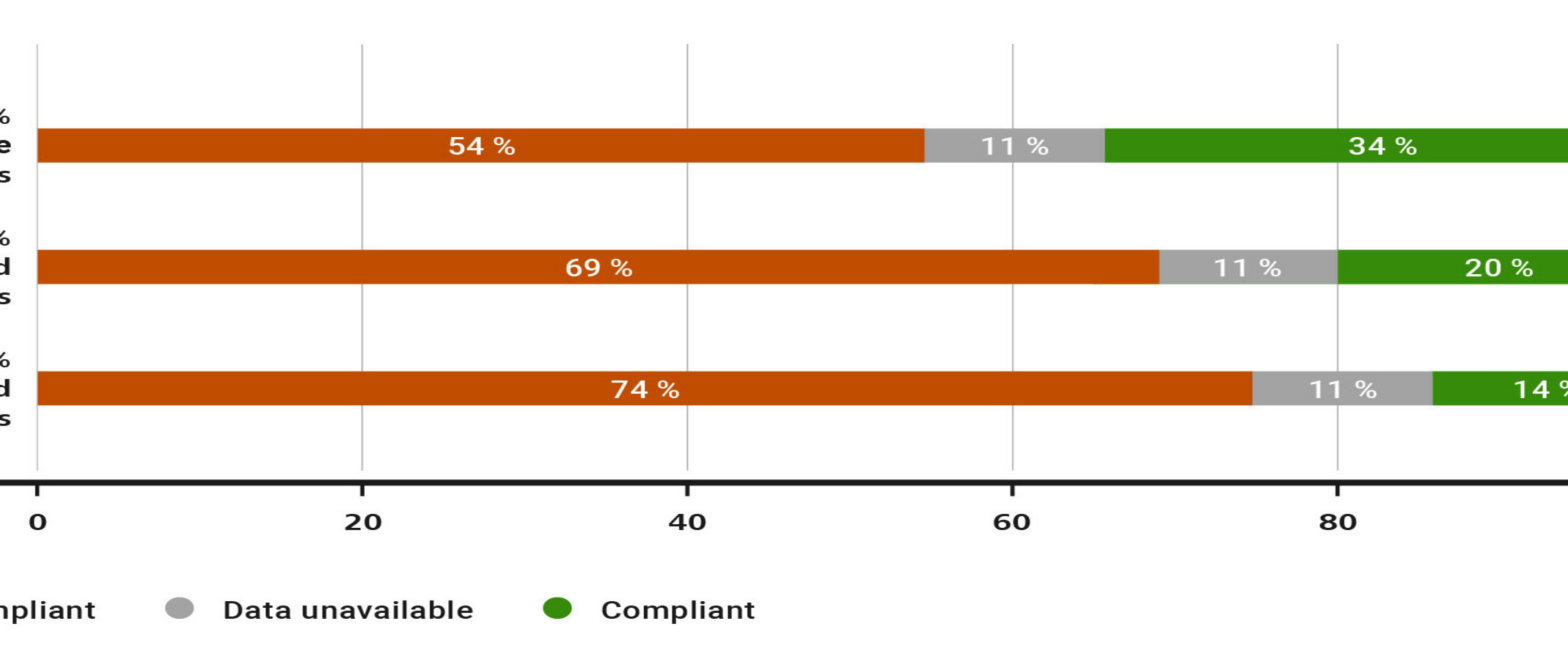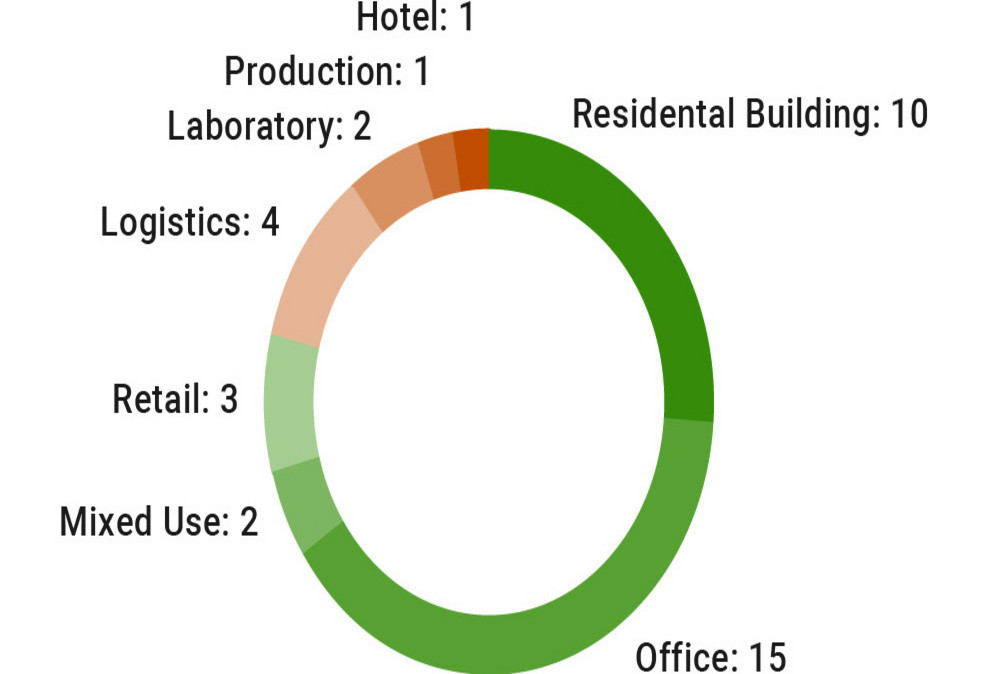"We’ll only succeed with the transformation to sustainable building if there’s a shift in our business practices to the principles of circularity," states DGNB CEO Dr Christine Lemaitre. "That’s why it’s right that the European Union has been using the EU taxonomy framework to develop criteria to promote circular building. Our aim with the study was to gauge whether the building sector is in a position yet to meet requirements and whether the taxonomy is achieving its goal of making a broad impact."
Circularity and the reality of the environment we build around ourselves – we’re not there yet
The overarching finding of the study, however, is that none of the buildings could be classified as taxonomy-aligned under the environmental objective of 'transition to a circular economy'. More than half of all new buildings met less than 50 per cent of the requirements. "The findings were quite a revelation. If you go to lectures and meetings or follow the media, everybody’s talking about circular building, so you get the impression the topic’s now reached industry," says Lemaitre. "But according to this study, it’s not yet got to that point in reality – in the buildings around us."
The biggest hurdle: actual reductions in resource consumption
In fundamental terms, the study distinguishes between two key thrusts. The first is that the aim of some criteria is to immediately reduce negative environmental impacts and resource consumption, e.g. by reusing building materials or introducing recycled materials. The second is that the future value of resources should be preserved, for example by avoiding materials that contain pollutants, or by ensuring materials can be salvaged from buildings.
The results of the study show that current approaches to preserving resources and using building materials are proving particularly challenging. For example, not a single building project succeeded in meeting the materials quota, which stipulates that at least 15% of introduced building materials should be reused, 15% should be recycled, and 20% should be either renewable, reused or recycled. The reasons for this were a lack of suitable materials as well as shortcomings in information and data on the circular economy. "Focusing the EU taxonomy on the here and now is the right thing to do," says Dr Christine Lemaitre. "But if the material quotas can’t even be met for projects that are prioritising the circular economy, the guiding principles of the taxonomy process are failing in impact terms."
The projects did perform better when it came to demonstrating the future value retention of buildings, or their ability to preserve the value of building materials – for example, by showing that buildings were designed to be adaptable or allowed materials to be reclaimed. However, even in this respect one major hurdle concerned identifying suitable methods and working out documentation requirements. Projects only succeeded with this if, in parallel to the process, buildings were undergoing sustainability certification and were able to draw on the specifications this offered.
Recommendations to the EU: introduce building material passports and strike a balance between all environmental goals
Based on the results of the study, the consortium of researchers came up with concrete recommendations, which were already submitted to the EU Commission in October 2022. These include adapting the criteria when it comes to market-readiness, providing clear definitions and methods, and setting benchmarks. A key instrument for plugging information and data gaps would be to introduce a building material passport that not only captures all information on the recyclability of materials, but also offers information on maintenance and different ways to remove or recycle materials in the future. It is also recommended that the EU taxonomy is brought into harmony with systems currently used to evaluate the sustainability of buildings, such as the DGNB certification system, including the key methods they stipulate.
An overarching recommendation has also been made that the ambitions central to environmental targets are brought into alignment in order to safeguard uniform achievement of the sustainability approach being pursued by the EU. In total, the EU classification system includes six environmental objectives. In order for a company or developer to demonstrate that buildings comply with the EU taxonomy, they must make a significant contribution to one environmental goal and meet so-called DNSH (do no significant harm) requirements for the other five goals.
Until now, companies have been able to choose between two environmental objectives: climate change mitigation and climate change adaptation. "If the criteria stay the way they are now, nobody in industry will choose to move to a circular economy because in comparative terms, the climate targets require less effort and lower outlays," explains Lemaitre. "To nonetheless remain ambitious about the circular economy goal, we recommend the development and sharing of a roadmap so the market can prepare for future requirements."
Sufficiency should be a core principle of the EU taxonomy
Basically, the taxonomy criteria lack any incentive to renovate existing buildings and use resources sparingly. "The first thing that should come to mind when you’re thinking about the circular economy is preserving existing buildings, not erecting new buildings that could end up being taken apart many years from now," says Lemaitre. "But also, currently the criteria could very well encourage wasteful behaviour if you can use additional renewable resources to meet the material quota. Instead, a central element should be sufficiency – as a positive design principle. For example, it could be stipulated that before every new building is erected, you first need an eco-sufficiency assessment."
Study jointly conducted with European partners and 29 respondents
The study was conducted by the DGNB with the support of the Spanish and Danish Green Building Councils, the Austrian Sustainable Building Council, the Climate Positive Europe Alliance, the Swiss Sustainable Building Council and the Dutch Green Building Council. The initiators of the study were also aided by the Croatian and Bulgarian Green Building Council.
The study team examined the market-readiness of circular economy criteria by looking at 38 projects involving 35 new buildings and three renovations. Overall, the assets could be assigned to 29 companies, which broke down into 13 property developers, five construction companies, four consulting firms, three investors and two banks, as well as a real estate corporation and an asset manager, each with their own property portfolios. Nearly all developments, or 95% of projects, were certified or in the process of having buildings certified for sustainability. The respondents were given from mid-July to early September 2022 to complete the taxonomy audit on their individual projects. This took the form of a comprehensive questionnaire with corresponding validation requirements.
"The EU taxonomy has enormous potential to bring about change. We can see this in the way more and more organisations are implementing areas of climate protection and climate adaptation measures in their corporate strategies," says Dr Christine Lemaitre. "Our role at the DGNB is to support this driver of change, both with our ESG verification system for the EU taxonomy and by implementing the criteria within our existing DGNB systems. As soon as the revised circular economy taxonomy criteria become available, we’ll also incorporate them into our instruments." The Circular Economy Taxonomy Study can be ordered free of charge as a PDF or hard copy by going to www.dgnb.de/publications.
Feedback from participants in the study
Guido den Teuling, Sustainability Manager at Redevco, Netherlands
"Reporting on circularity and circularity-related environmental topics is difficult, as frameworks and benchmarks don’t always exist or align. We hope to acquire a better understanding of how our current policies align with the EU taxonomy requirements and where these would need updating."
Toni Escudé, Head of Health & Sustainability at 011h, Spain
"The EU taxonomy and the Level(s) framework are both essential tools to drive the transition towards sustainability and circular economy. To apply the criteria, the methodology should be adjusted to the market reality as well as accompanied by an easy application of digital tools."
Sebastian Theißen, Managing Partner at LIST Eco, Germany
"A digital building resource passport can provide (…) transparency as it combines qualitative and quantitative assessments of circularity, pollutants, material composition and environmental analysis. Consequently, a standardised building material passport could be a very relevant optimisation and proof document for certifications and the EU taxonomy checks."

